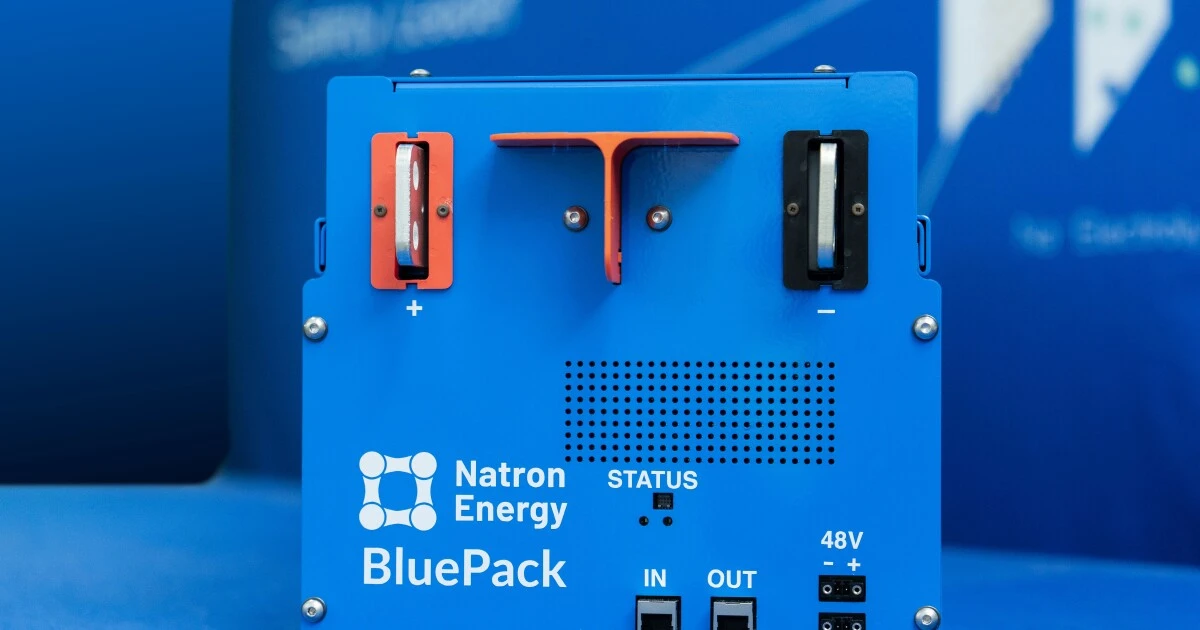It’s so rare to actually see a new battery tech exit the lab and enter production. Always seems like there’s 10,000 new up and coming breakthroughs in battery technology, but none ever leave the workbench.
While Na-ion batteries don’t have the energy density of Li-ion, they make up for it with many other factors such as more abundant source materials, increased safety, higher charge/discharge currents, and increased number of charge cycles.
Slashdot summary:
Not only is sodium somewhere between 500 to 1,000 times more abundant than lithium on the planet we call Earth, sourcing it doesn’t necessitate the same type of earth-scarring extraction. Even moving beyond the sodium vs lithium surname comparison, Natron says its sodium-ion batteries are made entirely from abundantly available commodity materials that also include aluminum, iron and manganese. Furthermore, the materials for Natron’s sodium-ion chemistry can be procured through a reliable US-based domestic supply chain free from geopolitical disruption. The same cannot be said for common lithium-ion materials like cobalt and nickel.
Sodium-ion tech has received heightened interest in recent years as a more reliable, potentially cheaper energy storage medium. While its energy density lags behind lithium-ion, advantages such as faster cycling, longer lifespan and safer, non-flammable end use have made sodium-ion an attractive alternative, especially for stationary uses like data center and EV charger backup storage. […] Natron says its batteries charge and discharge at rates 10 times faster than lithium-ion, a level of immediate charge/discharge capability that makes the batteries a prime contender for the ups and downs of backup power storage. Also helping in that use case is an estimated lifespan of 50,000 cycles.



For anyone wondering how the density actually compares, it seems that sodium batteries are a bit more than half the energy density of the best lithium batteries, but are a less mature technology so that may improve over time.
Judging from that graph, it looks like the sodium ion batteries are about as energy dense as Li-ion was in 2020, which is far from useless. Li-ion may still be the best but at a point, there’s “good enough” for many applications (eg cellphones) if the price is low enough.
I would happily take a slight reduction in EV range if it meant the battery was significantly less expensive and the number of charge/discharge cycles would last the life of the car. Someone else said that with a rated 50,000 cycles, one charge cycle per day would last 137 years.
The li-po batteries do already last the life of the car to be fair.
True, but aren’t they a bit handicapped by only using the “middle” range of the battery in order to extend their useful life?
Though to also be fair, I don’t know if these sodium batteries require the same management techniques or not.
Not sure, but i get 420km range and it’s dropped less than 5% after 110,000km, does 0-100 in 5 seconds. To be honest that’s more than quick enough for me.
If it’s nerfed a bit i definitely don’t notice it.
They aren’t rated for 50,000 cycles. The ones I have seen are rated between Lithium Cobalt Oxide and Lithium Iron Phosphate batteries. They don’t even come close to Lithium Titanate in charge cycles.
Lithium Phosphate, yes. Most EVs don’t use that because it doesn’t do as well as full Li-ion. LFP is a safer chemistry, though.
Ebikes are where I hope this gets a lot of use. That and stationary applications.
True but it’s growing rapidly each year. The base model 3 Tesla uses them and there are a lot of those around.
Sodium based batteries have reached at least 247 Wh/kg in the lab at least. While lithium in the lab does have much higher instances, that isn’t far off from current commercially available Li-ion EV batteries.
While such sodium batteries are not commercially available, it at least shows their potential to reach close to current EV batteries (around ~270 Wh/kg).
Source: https://www.pv-magazine.com/2024/04/25/sodium-ion-battery-could-charge-in-several-seconds/
Sodium batteries are commercially available as of early this year. I’ve seen Hakadi and Sriko tested independently on Youtube – they’re the real deal (sodium has a unique charging curve), but they have the same/similar organic electrolyte as LFP cells (I believe Natron uses PBA on both anode and cathode plus water-based electrolyte).
https://srikobatteries.com/product-category/sodium-batteries/sodium-cells/
https://hakadibattery.com/collections/sodium-ion-battery-cells-3v
The linked batteries all appear to have energy densities of about 130 Wh/kg or less.
I wasn’t denying sodium batteries are not commercially available/viable, just pointing out that while currently available sodium batteries have lower energy density than lithium ion batteries, in the lab, sodium batteries have the ability to reach similar energy density to currently commercially available lithium ion batteries.
The linked batteries are plenty useful for many purposes. I would gladly use them for home energy storage, electronics, or recreation vehicle use. I’m generally wary of lithium battery safety in outdoor, or high heat environments, and look forward to safer options becoming more available/common.